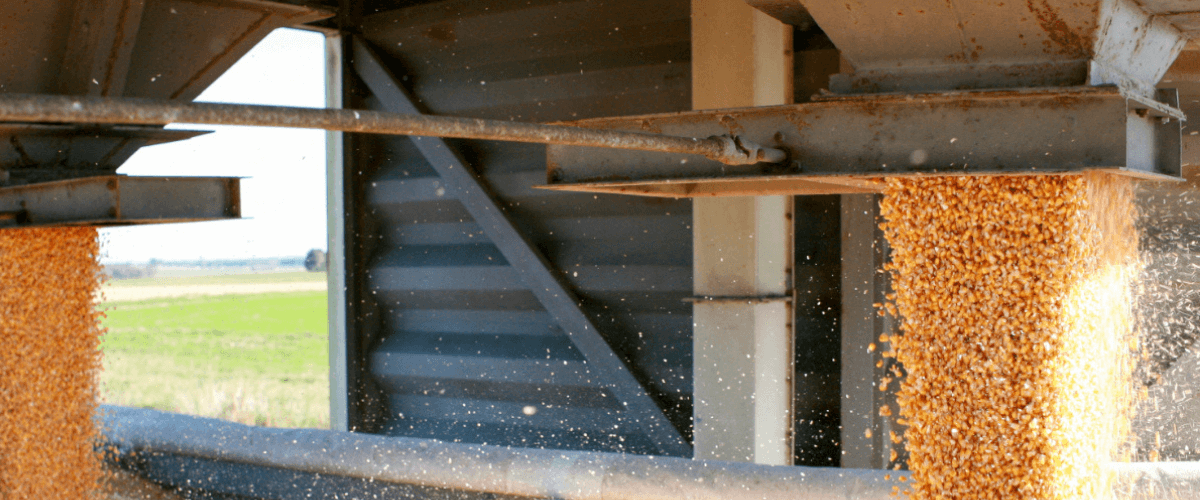Before arriving at KSU in 1994, Dr. Fred Fairchild had more than 30 years of industry experience in the design, construction, operation and management of feed, flour, dry corn milling and pet food manufacturing facilities. A professor of grain science and industry, Fairchild worked previously at Todd & Sargent in Ames, IA, where he was vice president of engineering. A licensed professional engineer, Fairchild specializes in plant design and construction, manufacturing technology, maintenance, materials handling and plant management.
Materials Handling II

GEAPS Online Learning courses are available anytime on-demand. Each course takes approximately 10 hours to complete and can be completed at any pace over five weeks. Courses must be completed within a five-week period that begins the day you register. After registering, learners will be sent a confirmation email, then you’re ready to start learning!
Cost:
$495 for members
$795 for non-members.
Course Description: This course is the second in a three-part series and is designed to teach students about the properties and flow characteristics of grains and other dry bulk materials. Students will be able to determine various material characteristics and their effects on the selection and sizing of screw feeders, drag conveyors and bucket elevators. Each lecture uses visual examples, sample problems and quizzes to aid students in the understanding of course material.
Course Goals: This course aims to teach students the basic principles of dry bulk material flow; material properties and characteristics; bin capacities and pressures; types, selection and sizing of spouting, valves, distributors and gates and components, designing, sizing and powering of screw conveyors.
Target Audience: Materials Handling II is designed for people with responsibilities relating to management, operation and maintenance of grain storage, handling and processing facilities. Specifically, grain facility owners/operators, elevator superintendents, location or regional managers, designers, engineers and maintenance personnel, university students and anyone with a professional need to learn more about grain and ingredient handling characteristics and the equipment used in grain and processing facilities.
Instructor:
The Course of Study
Lecture 1 – Screw Feeder Components and Selection
This lecture will acquaint students with screw conveyor design and selection. Students will become familiar with screw conveyors used as feeders and their applications; the components in a screw feeder; the use of tapered diameter, variable pitch and tapered shaft flighting and their effects on feeder capacity and the principles of screw feeder design.
Lecture 2 – Screw Feeder Selection
This lecture will familiarize students with the principles of selecting screw feeders. The goal of this lecture is for students to learn how to design a screw feeder and be able to size a screw feeder for a given product (ingredient) at a given capacity. Students will strengthen their knowledge of the principles through a sample problem, for which tables and formulas will be provided.
Lecture 3 – Screw Feeder Powering
This lecture will give an overview of screw feeder powering using formulas and examples. Students will learn how to determine the minimum length of shroud required for the chosen feeder size; how to calculate horsepower (Hp) requirements for a screw feeder and how to check torque required for coupling shafts and bolts. By the end of this lecture, students will know how to calculate screw feeder capacity for future use.
Lecture 4 – Drag Conveyor Components and Selection
The purpose of this lecture is to acquaint students with drag conveyor components and their selection. Students will become familiar with drag conveyor and their uses, different types of drag conveyors and learn the advantages and disadvantages of using drag conveyors.
Lecture 5 – Drag Conveyor Selection and Sizing
In this lecture students will learn to identify and choose different types of drag conveyor inlets and intermediate discharges, how to select the proper type (style) of drag conveyor for a given application and how to select the proper size and speed for a drag conveyor.
Lecture 6 – Drag Conveyor Selection and Power
This lecture will teach students the drag conveyor horsepower formula, which is used to determine the required horsepower and the correct motor size for a drag conveyor.
Lecture 7 – Bucket Elevator Types and Components
In this lecture, students will learn to recognize and identify different types of bucket elevators, the various components of a bucket elevator and be able to explain the purpose of the various components of bucket elevators.
Lecture 8 – Elevator Cup Types, Spacing and Capacities
This lecture will familiarize students with the different types and styles of bucket elevator cups, the correct spacing for different types of cups and how capacity is measured and used for different types of cups.
Lecture 9 – Elevator Pulleys, Belt, Splices and Capacity
This lecture will teach students about types of pulleys and their use in bucket elevators, types of belts and splices used in bucket elevators and how to determine the capacity of a bucket elevator.
Lecture 10 – Bucket Elevator Housing Sizing, Power Requirements and Safety Devices
In this lecture students will learn to determine the minimum casing dimensions for a bucket elevator, shaft horsepower and motor size for a bucket elevator and to identify the types of safety devices required for a bucket elevator.